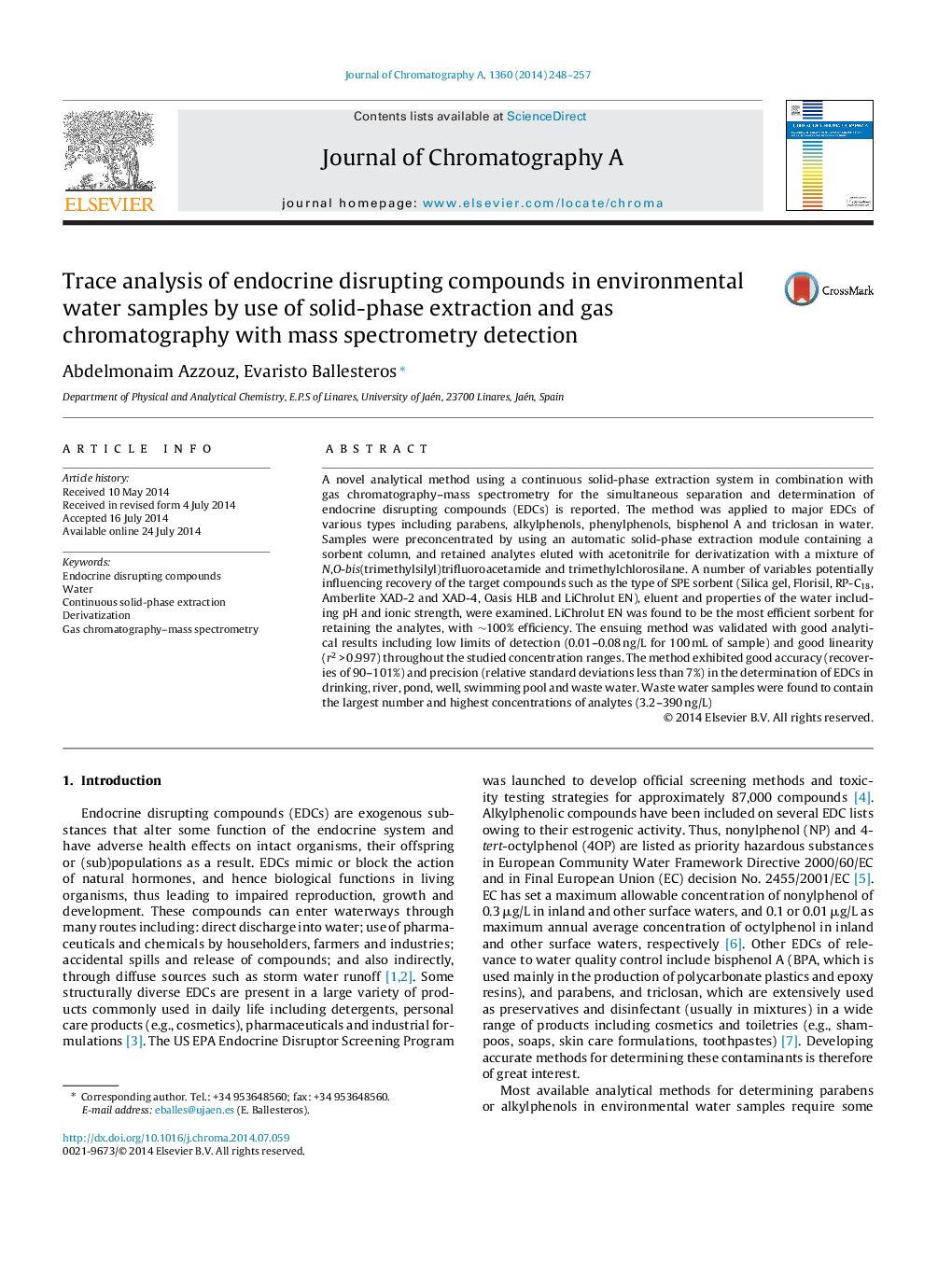| کد مقاله | کد نشریه | سال انتشار | مقاله انگلیسی | نسخه تمام متن |
|---|---|---|---|---|
| 1199852 | 1493566 | 2014 | 10 صفحه PDF | دانلود رایگان |
• A new approach for the GC–MS determination of 13 endocrine disrupting compounds in waters is presented.
• Miniaturization of the sample treatment system using a continuous solid-phase extraction unit.
• The advantages and disadvantages of different sorbent materials have been discussed.
• The developed method provides high sensitivity, wide linear range, and good accuracy and precision.
• Successful application of the approach to the analysis of several types of environmental water.
A novel analytical method using a continuous solid-phase extraction system in combination with gas chromatography–mass spectrometry for the simultaneous separation and determination of endocrine disrupting compounds (EDCs) is reported. The method was applied to major EDCs of various types including parabens, alkylphenols, phenylphenols, bisphenol A and triclosan in water. Samples were preconcentrated by using an automatic solid-phase extraction module containing a sorbent column, and retained analytes eluted with acetonitrile for derivatization with a mixture of N,O-bis(trimethylsilyl)trifluoroacetamide and trimethylchlorosilane. A number of variables potentially influencing recovery of the target compounds such as the type of SPE sorbent (Silica gel, Florisil, RP-C18, Amberlite XAD-2 and XAD-4, Oasis HLB and LiChrolut EN), eluent and properties of the water including pH and ionic strength, were examined. LiChrolut EN was found to be the most efficient sorbent for retaining the analytes, with ∼100% efficiency. The ensuing method was validated with good analytical results including low limits of detection (0.01–0.08 ng/L for 100 mL of sample) and good linearity (r2 > 0.997) throughout the studied concentration ranges. The method exhibited good accuracy (recoveries of 90–101%) and precision (relative standard deviations less than 7%) in the determination of EDCs in drinking, river, pond, well, swimming pool and waste water. Waste water samples were found to contain the largest number and highest concentrations of analytes (3.2–390 ng/L)
Journal: Journal of Chromatography A - Volume 1360, 19 September 2014, Pages 248–257
